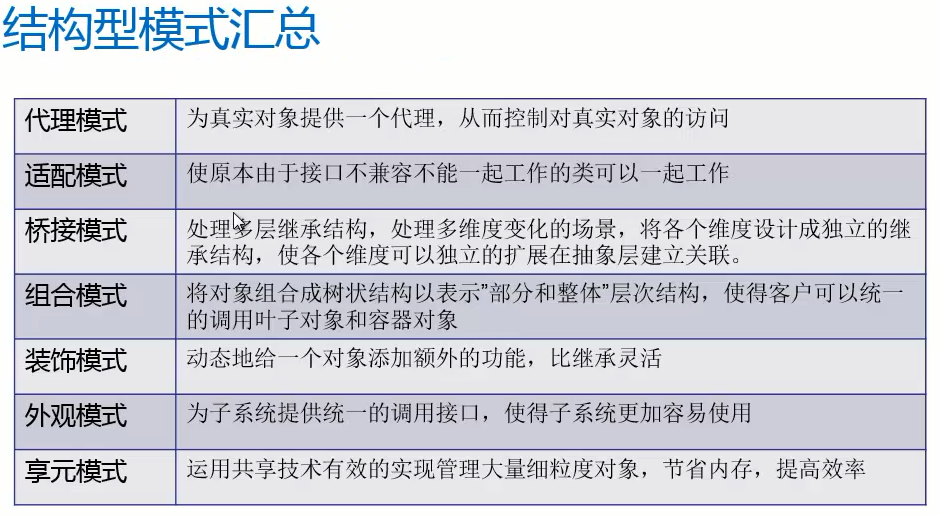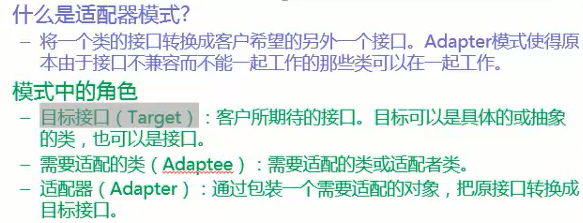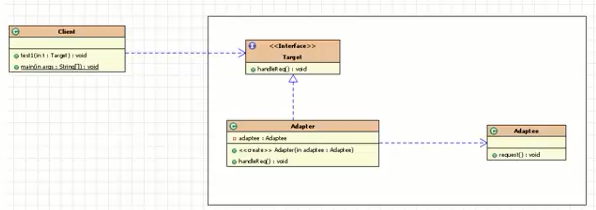从现在开始,将转入设计模式中的结构型模式

定义与角色


工作场景

代码实现

/** * 被适配的类--相当于键盘 * @author bzhx * 2017年3月10日 */ public class Adaptee { public void request(){ System.out.println("可以完成客户请求的需要的功能"); } }

public interface Target { void handleReq(); }

/** * 适配器(类适配器方式)--相当于usb转接器 * @author bzhx * 2017年3月10日 */ public class Adapter extends Adaptee implements Target{ @Override public void handleReq() { super.request(); } }

/** * 适配器(对象适配器,使用了组合方式跟被适配对象整合)--相当于usb转接器 * @author bzhx * 2017年3月10日 */ public class Adapter2 implements Target{ private Adaptee adaptee; @Override public void handleReq() { adaptee.request(); } public Adapter2(Adaptee adaptee) { super(); this.adaptee = adaptee; } }

/** * 客户端类----相当于笔记本,只有usb接口 * @author bzhx * 2017年3月10日 */ public class Client { public void test1(Target t){ t.handleReq(); } public static void main(String[] args) { Client c = new Client(); Adaptee a = new Adaptee(); Target t = new Adapter(); c.test1(t); } }

/** * 客户端类----相当于笔记本,只有usb接口 * @author bzhx * 2017年3月10日 */ public class Client2 { public void test1(Target t){ t.handleReq(); } public static void main(String[] args) { Client2 c = new Client2(); Adaptee a = new Adaptee(); Target t = new Adapter2(a); c.test1(t); } }
